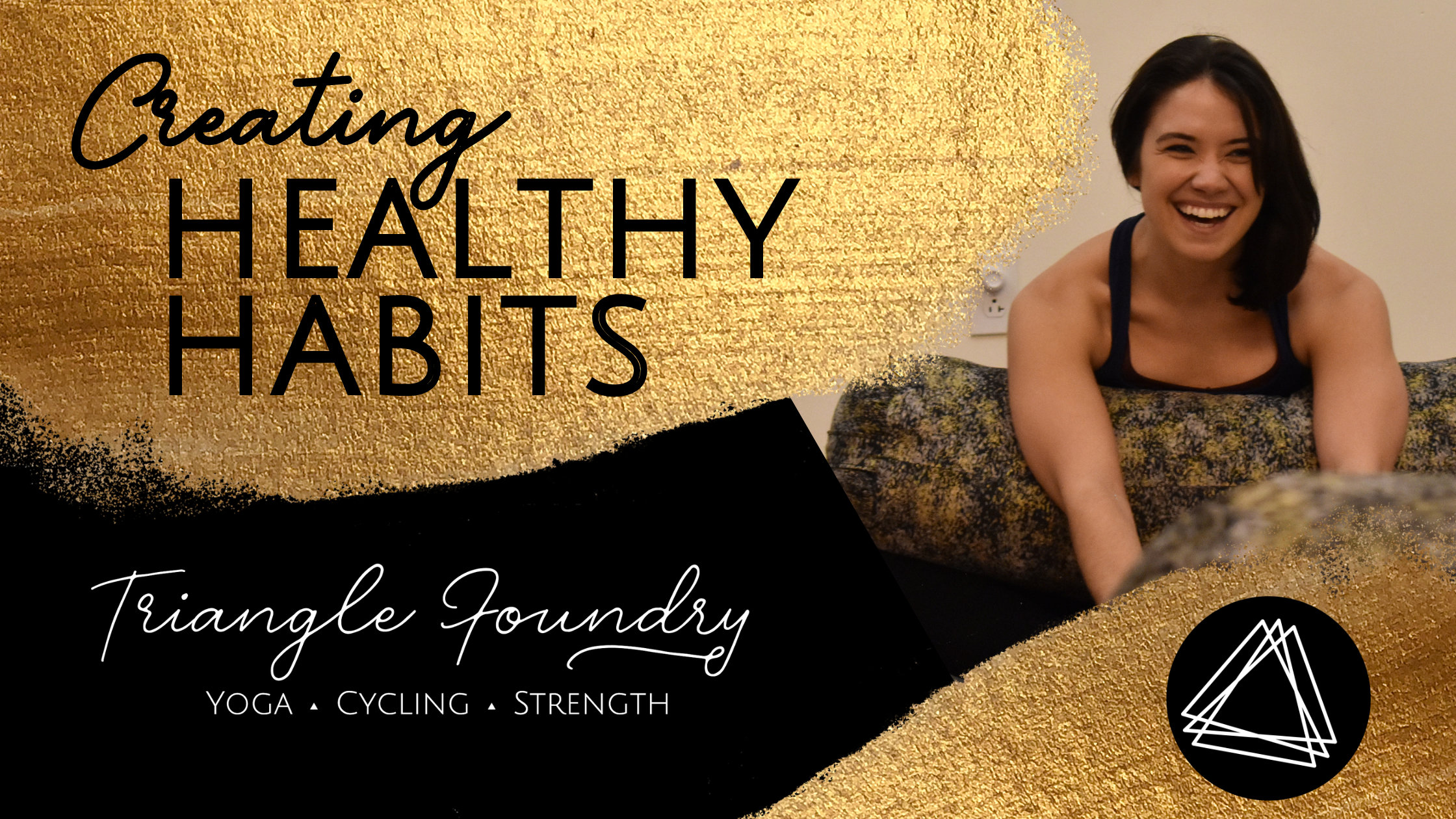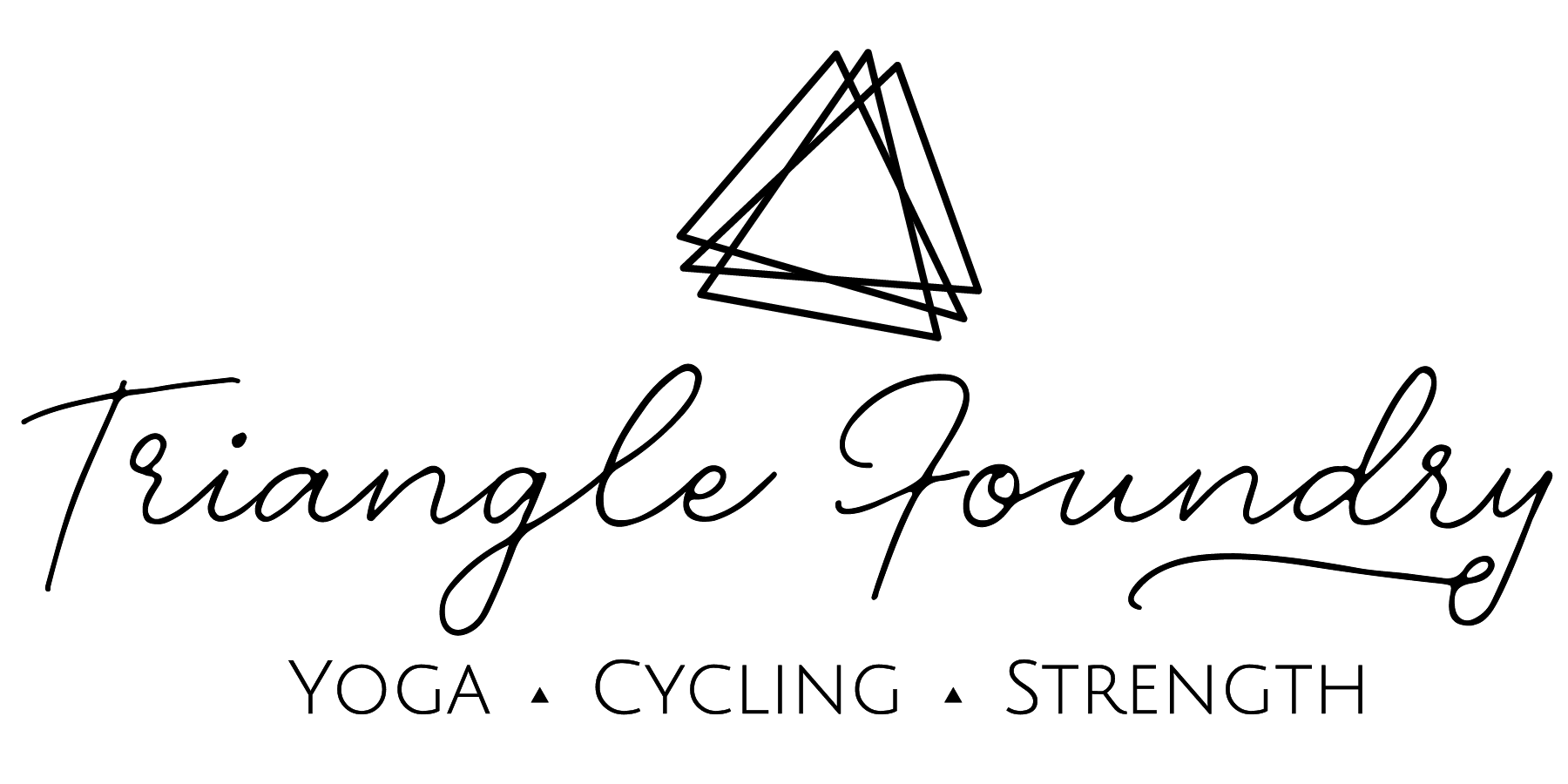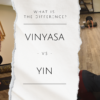Register for the Creating Healthy Habits lecture on January 14th at 11:15am. Jules will break down everything in this article plus more. You'll learn how you can apply these steps to your life to create healthy habits.
Creating Healthy Habits

It’s basically like clockwork. As the end of the year approaches, it’s almost too easy to look back on what we did and didn’t achieve. And let’s be real; we probably take what we didn’t achieve for ourselves a little too harshly. We create bold expectations of achievements in the year to come based on our evaluation of the previous year. And the challenge of the bold expectations is completely okay. The key is to determine how to convert the bold aspiration into achievement for ourselves.
We are creatures of habit. It can be exceptionally difficult to change our behaviors once we have developed habits and built our lives around them. To create a new habit and consistently enforce it is WORK. The reality is that, as creatures of habit, when something is meant to be productive for ourselves, it still can sometimes be a challenge to initiate the change.
“It’s supposed to be hard. If it were easy, everyone would do it.”
– Tom Hanks in A League of Their Own
How exactly do we begin to convert our expectations into achievements? James Clear, author of Atomic Habits, has determined that there are four steps that create the backbone of every formed habit: Cue, Craving, Response, and Reward. In order to effectively create, develop, and maintain habits, it’s important to stick to this cycle. The completion of the habit cycle is exactly how we achieve the expectations we set for ourselves.
MAKE IT OBVIOUS: THE CUE
The cue is our basic identification of a reward. It’s the spark to the development of the habit as a whole, based on information that sets off a chain reaction of behaviors that correspond with the satisfaction of our needs. Our minds constantly analyze our internal and external environments for indicators of where we can identify rewards. These cues are bits of information that encourage the beginning of the formation of the habit in order to achieve the rewards we identify.
There are two different reward concepts that the cues we identify can lead to: primary and secondary. Primary rewards satisfy basic needs based on food, water, and sex. Secondary rewards satisfy complex needs based on concepts like money, power, status, love, friendship, recognition, and personal satisfaction. Both reward concepts are essentially based on our basic human need to survive and reproduce.
MAKE IT ATTRACTIVE: THE CRAVING
The identification of the cue encourages the development of the motive that drives the achievement of the reward. This is also known to be the development of the craving. The craving is not the need of the habit itself; rather, it is the need of the internal or external change in state that the habit establishes. In theory, any bit of information holds the potential to motivate change; however, in practice, cues tend to hold exceptionally different weight on our motivation based on our interpretation in combination with our own specific thoughts, feelings, and emotions. Our specific interpretation of the cue is how we determine the importance of the achievement of the reward; this is how we develop the motivation and inspiration to change our behaviors as a response to what we crave.
The chemical in our brains that specifically impacts the creation and development of habits is dopamine. Dopamine is known as the feel-good neurotransmitter; our brains release dopamine when our actions and behaviors lead to reward. In order to effortlessly reinforce the reason behind the habits we work to develop, it’s important to connect them to something pleasurable. When that dopamine spike is linked to a specific behavior, we subconsciously encourage stronger drive to keep it in motion, simply because it feels good to do so.
MAKE IT EASY: THE RESPONSE
This identification and motivation then establishes the response: the habit itself. The response is where we often experience the most challenges with the development of habits. The habits we develop are completely dependent on our motivation, our ability to demonstrate the behavior or the action we want to establish, and the friction that is involved with the response.
Our ability to demonstrate the behavior or the action we want to establish is determined with one basic concept to consider: are we capable of doing it? When we are physically and mentally able to perform a behavior or action, we have the ability to develop the response based on it. On the other hand, when a specific behavior or action requires more physical or mental effort, or friction, than we would like to expend on it, we’re more likely to simply not continue with it. This is often the point in which we determine whether the habit can or cannot be maintained in the long term.
We have the identification, we developed the motivation, and we know the response. How do we rise to the challenge of the friction and follow through with our habits in order to achieve the reward?
Here are some of the most effective methods to work through the friction:
- Start Small. One of the best reinforcements when it comes to the development of habits is setting incremental changes. As previously noted, we are creatures of habit. A lot of change all at once holds the tendency to be overwhelming, exhausting, and difficult. When we shift our perspective to the achievement of a lot of little rewards, we are more encouraged and motivated to keep our long term aspirations in mind.
- Enforce Convenience. The more convenient it is to work on the response needed to achieve the reward, the more likely you are to keep it in motion. We often tend to form habits based on what is the easiest to do. In order to continuously encourage ourselves to work towards what we hope to achieve, it’s exceptionally important to identify any potential obstacles that could deter our motivation. Consider all of the different obstacles that could render some friction that you would need to work through in order to maintain the response you developed. What could you do for yourself in order to eliminate some of the stress they provoke?
- Combine Behaviors. Katherine Milkman, behavioral economist and professor at the Wharton School at the University of Pennsylvania, developed the conceptual practice known as the temptation bundle. This combines an “indulgence” with a “should behavior” in an effort to engage in “delayed-reward” behavior. Think in terms of… you’ve really wanted to listen to the newest episode of a podcast you like, so you indulge in the new podcast episode while you complete the response-driven should behavior of exercising for thirty minutes. Another example… you want to spend some time with your friends, and you’re intent on spending less money on eating out. You indulge in some time with friends by letting them come over while you complete the response-driven should behavior and cook dinner for yourselves together. This link between something we enjoy and something that requires effort is more likely to continuously reinforce our motivation.
- Encourage Accountability. Support is something that we all could use. In the development of new habits, support from those we love is probably one of the most effective forms of motivation to keep ourselves empowered through even our weakest moments. It can be easy to be defeated by friction when there’s no one to keep us accountable for being strong and powering through it. Being open about the aspirations we develop for ourselves and the work we put in to achieve them with those we love creates a stronger sense of accountability and commitment to the achievement of the reward.
- Be Forgiving of Yourself. If it were easy, everyone would do it. We won’t always be spot on with our efforts, and that’s completely okay. Perfection is a concept that holds no weight in the development of habits. When we experience setbacks, it’s important to forgive ourselves in order to keep our momentum as we continue on to achieve our expectations. We could do this with the shift to a perspective that encourages us to build grace into our goals. Think of it like this… let’s set the expectation for the new habit we have developed to be successful about 75% of the time. Perhaps we set the aspiration to get to one early class each week throughout 2023. Should we only get to three out of the four classes within the first month of 2023, then we could consider ourselves successful. Should we get all four classes within the first month of 2023, then we should recognize that we’re total rockstars for our efforts.
- Celebrate Each Achievement. The enforcement of the response is WORK. We should be proud of ourselves for all we achieve throughout the creation and development of habits. The recognition of progress helps to motivate our continued inspiration to reach the achievement.
MAKE IT SATISFYING: THE REWARD
We notice the reward with the cue. We need the reward with the craving. We work towards the reward with the response. What exactly is the reward?
The achievement of the reward is the completion of the habit cycle. It holds the promise of the satisfaction of our needs, as well as the knowledge that we subconsciously develop our sensory nervous system with. The brain functions with achievement and disappointment as feedback mechanisms in order to determine both useful and useless behaviors. This encourages the development of our comprehension of how to effectively identify and achieve rewards.
The key to effectively create, develop, and maintain healthy habits is in the comprehension of this cycle, as well as the determination to work through the cycle in combination with our own specific needs, motives, and abilities. The identification of the cue encourages the development of the motive that drives the response that will lead to the achievement of the reward. The comprehension of how this cycle works through our own subconscious needs-based achievement system is exactly how we convert even our boldest expectations for ourselves into achievements.
In combination with the comprehension of the habit cycle, it’s additionally important to remember this: it is okay to be happy with who you are. All change, whether it is minor or major, is worthy of celebration as we work to achieve better lifestyles or reach the expectations we develop for ourselves. We do not need to become a new person in order to do this. There is no “New Year, New You.” There is only YOU and the effort you put in to work towards being the best YOU that you could be. Here’s to all that you have been, all that you are, and all that you will be.






 I got
I got



 in bio to
in bio to
